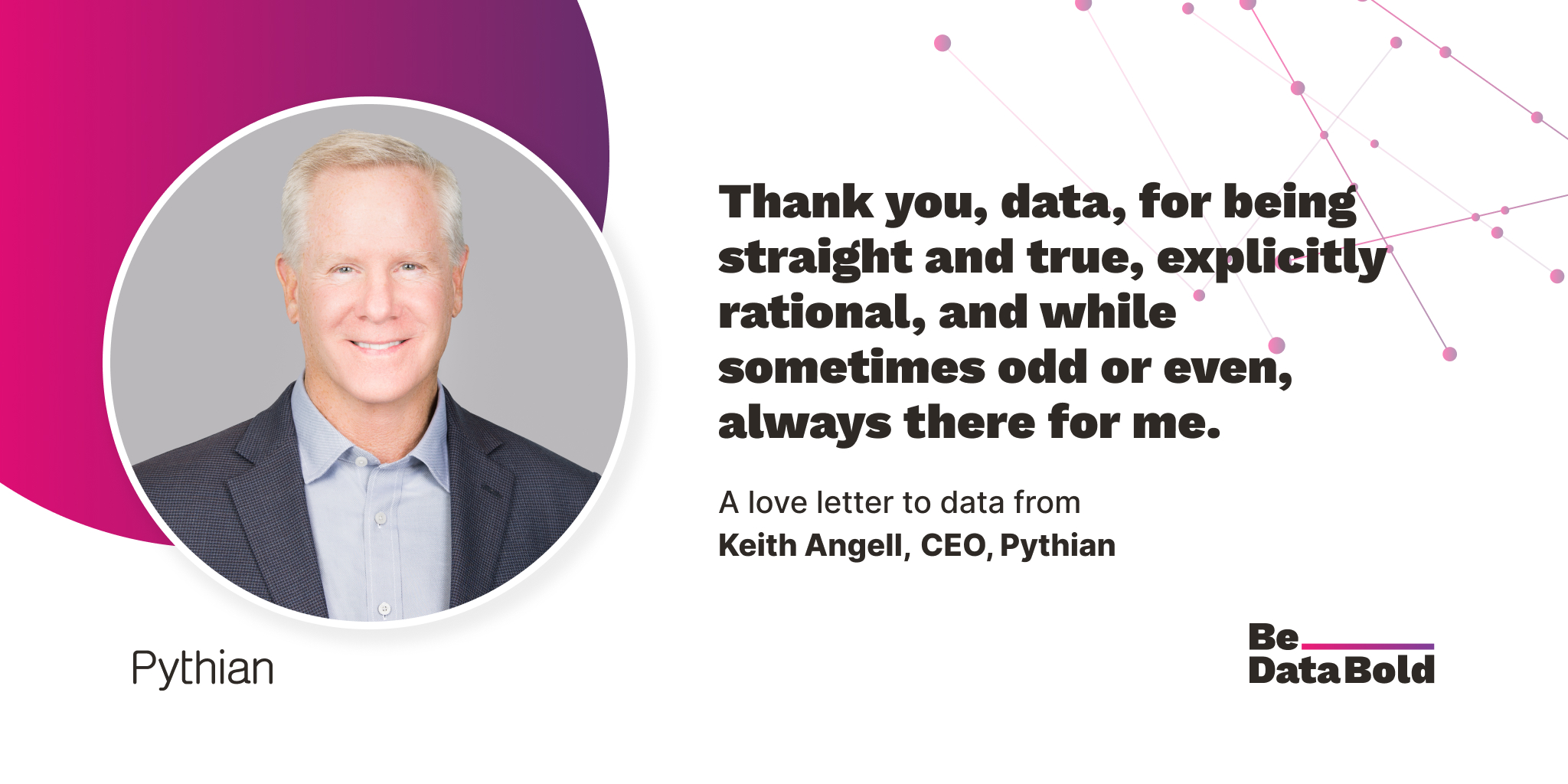Revving Up Your AI Journey: Data as Fuel, Business as Driver
The allure of AI is strong, but many organizations are struggling to translate that excitement into actionable strategy. Embarking on the “J2AI” (Journey to AI) will encounter many obstacles from truly defining a starting point of high-value AI use cases, budgetary implication, ethical AI, governance, privacy concerns, data quality, security, compliance, skillset, and a multitude of other priorities.
Beyond technology, we must acknowledge the human side: talent, skills, and change. Treating these as an afterthought, rather than a core component from the beginning, significantly increases organizational resistance and jeopardizes the transformation's success.
AI is the future, but how do we actually get there? In a previous article, I talked about eXcelerated Digital Transformation: Data is the Map and Compass why data is the cornerstone of informed decision-making. It’s not just a byproduct of digital transformation—it’s the very force that fuels meaningful change.
Building on that earlier point—and because using general analogies is my go-to—in this case, we will be imagining a car (my heart yearns for a Pagani Huayra, but let's be practical.) For this journey, we'll picture a luxurious sedan. You get to choose one: a Rolls Royce, Bentley, Range Rover, or a Maybach; luxurious, comfortable ride, high performance, bespoke, timeless, and equipped for the long, strategic drive AI requires. The success of this journey hinges on multiple components, but two are paramount: a robust “AI” engine and the “data” fuel that powers it. Importantly, just like with any engine, the quality of the fuel directly impacts performance.
Fuel grade matters: data medallion architecture
Just like a high-performance engine requires premium fuel, effective AI demands high-quality data. This is where the data medallion architecture comes into play, acting as our "fuel refinery." We can think of it in terms of fuel grades:
- Bronze fuel (raw data/landing zone): This is the raw, unprocessed data straight from the source. It's like crude oil, containing potential but requiring significant refinement. It's stored in the landing zone of your data lakehouse.
- Silver fuel (cleaned and standardized data/curated zone): This data has been cleaned, standardized, and transformed for consistency. It's like refined gasoline, ready for general consumption. This is stored in the curated zone of your data lakehouse.
- Gold fuel (aggregated and enriched data/refined zone): This is the highest grade fuel, enriched and optimized for specific analytical and AI workloads. It's like high-octane racing fuel, delivering maximum performance. This is stored in the refined zone of your data lakehouse or warehouse.
By implementing a data medallion architecture, you ensure that your AI engine is fueled with the right grade of data, maximizing performance and efficiency. This architecture is vital for both your data lakehouse and warehouse, as it organizes and prepares data for consumption.
The "Where are we going?" conundrum: finding AI use cases
One of the biggest roadblocks I consistently hear is, "We're struggling to find AI use cases." This is where a focused distillation exercise is crucial. Think of it as refining raw oil into high-octane fuel.
- Value mapping: Start by identifying your organization's key value streams. What are the processes that drive revenue, customer satisfaction, and operational efficiency?
- Problem identification: Within these value streams, pinpoint the pain points and bottlenecks. Where are you experiencing inefficiencies, delays, or missed opportunities?
- Data requirements (fuel specification): For each identified problem, ask: What data do we have? What data do we need? What grade of data (bronze, silver, gold) is required to address the problem effectively? How can we leverage this data to address the problem?
Business is the driver: forging a path with trust and transparency
In our car analogy, the AI engine and data fuel are essential. But without a skilled driver, we're going nowhere—and that driver is the business. This isn't just about handing over the keys; it's about forging a true partnership built on trust and transparency.
Why is this so critical? Because AI isn't a tech-first solution; it's a business-problem-first approach. Technology is the enabler, the powerful engine and refined fuel, but the business defines the destination and navigates the route.
Beyond the financial ROI: measuring true value
While financial ROI is important, it shouldn't be the sole measure of success for your AI initiatives. Based on my experience, this partnership won't always be a smooth ride and requires a constant investment in building relationships within the business.
The business must prioritize strong partnerships between technical teams and stakeholders, overcoming common hurdles like communication gaps, trust deficits, siloed thinking, unrealistic expectations, and a lack of focus on business outcomes. Both teams (IT and the business) will have to work effectively on improving communication channels, fostering transparency, breaking down departmental barriers, setting realistic timelines, and aligning AI initiatives with strategic business goals. Each of these components is crucial for realizing the transformative potential of AI.
The outcomes of a business-tech partnership are immense, as leveraging AI unlocks a range of powerful outcomes. Organizations can achieve enhanced problem-solving by combining business acumen with AI's analytical capabilities, leading to more efficient solutions. Improved decision-making becomes possible through data-driven insights, empowering strategic choices. AI fuels increased innovation, enabling the creation of new products and business models. Customers benefit from an enhanced customer experience through personalized interactions and improved responsiveness. Businesses also see operational efficiency gains through automation and streamlined processes, and ultimately, achieve strategic growth by solving key business problems and gaining a competitive advantage.
The toad trip essentials: beyond data
To ensure a smooth and successful J2AI, you'll need more than just fuel. You'll also need:
1. Reliable co-pilots (partners): A GPS/navigation system and roadside assistance. They provide external guidance, expertise, and support, helping you navigate unfamiliar territory and handle unexpected challenges.
2. A clear destination (executive sponsorship): The steering wheel and the road map. Executive sponsorship sets the direction and provides the overall vision for the AI journey, guiding the organization towards its goals.
3. A well-maintained vehicle (budget): The overall vehicle maintenance. Allocate sufficient resources to fund your AI initiatives, which will include not just the tech, but all components of the overall ecosystem, including organization change management.
4. Infrastructure - Scalable and reliable to handle AI workloads: The Chassis and Engine Mounts. These are the foundational elements that provide scalable and reliable AI workloads, which include cloud computing, data lakehouse/warehouse, data storage and the processing power the journey demands.
5. Integration and interoperability: The Transmission and Electrical Wiring. Another foundational element for operations as it provides seamless integration and interoperability between AI systems and existing business processes. In addition, these are critical for communication across all levels within the organization.
6. Governance, risk, and compliance: The tires. They provide the necessary stability, safety, and adherence to regulations for a smooth and compliant journey.
7. Human intelligence: The driver and mechanics. These are the skilled individuals who operate and maintain the vehicle, ensuring it performs at its best, hence, invest in your people and equip your team with the required skills and avoid major accidents.
8. Culture and alignment: The car's frame and body. This is the overall structure and design that holds the car together, representing the organization's culture and its alignment with the AI strategy, fostering collaboration, enabling data democratization and embracing change at all levels of the organization.
9. Ethical AI principles: The seat belts and airbags. A mandatory requirement for responsible and successful AI implementation. Acting as our "seatbelts," fairness, transparency, accountability, privacy, and safety, ensure trustworthy AI development and deployment. Ensuring prioritization of these ethical considerations, organizations build trust, mitigate risks, and navigate their AI journey with confidence and integrity.\
Don't just drive—navigate intelligently
AI is not a magic bullet. It's a powerful tool that, when used strategically, can transform your organization. By focusing on data quality (fuel grade), prioritizing business needs, and measuring value beyond financial ROI, you can navigate your J2AI with confidence and reach your desired destination.
So, buckle up, fuel up with the right grade of data, and let's embark on this exciting journey together! Let's transform data into actionable insights and drive our businesses toward a future powered by AI.
You May Also Like
These Related Stories

Defending Against Email Threats: Demystifying Common Terms
GoldenGate 12.2 big data adapters: part 1 - HDFS


No Comments Yet
Let us know what you think